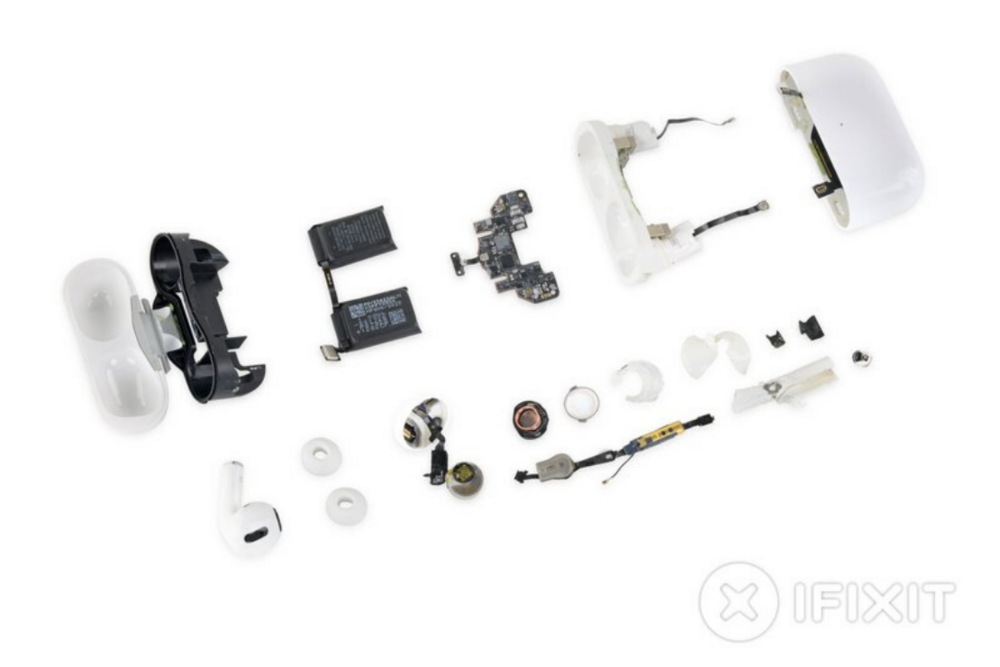Supply Chain Fundamentals: Manufacturing
Jul 29, 2020

Rich Mokuolu is the Cofounder and CEO of Partsimony. He has worked on numerous critical global supply chain initiatives across various multi-billion-dollar industrial companies. Partsimony completed the STANLEY + Techstars Accelerator in 2018, and is partnering with Techstars to support hardware entrepreneurs.
In part two of our three part “Supply Chain Fundamentals” series, we will be covering the manufacturing segment within supply chain networks.
Read part one in this series: Supply Chain Fundamentals: Sourcing

As a refresher, supply chain can be defined as, “The sequence of processes involved in the production and distribution of a commodity.” From the above steps/nodes within a product life cycle, the supply chain encompasses the sourcing, manufacturing, and fulfillment processes.
Manufacturing can be defined as the processes involved in turning a raw material (e.g. sheet metal) into a final product (e.g. a car frame) via labor, machines, chemical, or biological processing.
To further explain the concept of manufacturing within supply chains, let’s continue with our real-world example of the charging case of the Apple AirPods Pro. Pictured here is a breakdown of each component of the case.

Apple AirPods Pro components, photo courtesy of iFixit, Creative Commons Attribution Noncommercial Share Alike license
There are numerous concepts we can cover in regards to manufacturing such as LEAN, SixSigma, Just-inTime (JIT), etc. However, a key principle that often isn’t implemented well and greatly impacts manufacturing is the principle of Design for Manufacturability (DFM). Hence, it’s best we focus this section on DFM as it relates to the manufacturing process — if you’d like to learn more about other manufacturing principles let us know and we’ll be happy to cover them in a separate article.
Design for Manufacturability
Engineering teams and designers develop specifications of the product and undergo iterative development and testing to fine-tune the design before selling the product to customers. In order to ensure that design specifications can scale and be cost-effective for production, engineering teams adopt a Design for Manufacturing (DFM) methodology. DFM is the general engineering practice of designing products in such a way that they are easy to manufacture. Simply put, DFM is the practice of ensuring that products such as the charging case of an Apple AirPods Pro are designed to be easy to manufacture with favorable costs and lead times.
This might sound obvious in theory but is quite hard to do in practice. As a fellow engineer, I can attest to the fact that we engineers tend to “over-engineer” products to withstand the test of time. Using the charging case of the Apple AirPods Pro as an example, this could be engineering specifications that may require the below:
Utilize expensive raw materials to achieve a desired surface finish or improve component performance;
Demand tight tolerances, requiring specialized manufacturing processes which lead to an increase in cost due to additional required labor;
Possess unnecessary complex design features that require the use of non-standard components which have to be customized.
In order to enforce good DFM practices, below is a list of key considerations/best practices to take into account to guide engineering decisions as it relates to manufacturability.
7 Key Considerations for Design for Manufacturability (DFM):
01. Develop a modular design
Modular design, or modularity in design, is a design theory and practice that subdivides a system into smaller parts called modules, which can be independently created, modified, replaced, or exchanged between different systems. Simply put, you can envision modular designs as having aspects of your product designed as Lego blocks which can be easily changed/adjusted per required functionality. Having a modular design is very important to help simplify manufacturing activities such as inspection, testing, assembly, purchasing, redesign, maintenance, service, etc. An important note to consider with modular designs are the connections between modules, which can be a limiting factor when applying this principle.
02. Utilize standard components
Standard components are components which are typically manufactured in high volumes and can be easily purchased. Examples of standard components include screws, spacers, resistors, brackets, etc. The availability of standard components helps in reducing product costs and lead times. In addition, their reliability factors are well established for component performance considerations.
03. Reduce the number of parts in your BOM
The larger the number of parts in your Bill of Materials (BOM), the more complex/expensive it is to have your product manufactured. A good approach to adopt in reducing the total number of parts in your BOM include utilizing one-piece structures and selecting manufacturing processes which allow for scalability such as injection molding, extrusion, precision castings, and powder metallurgy, among others.
04. Design parts for multi-functionality
Similar to the principle of working to reduce the total number of components within your BOM, having components be multi-functional is a great way to achieve BOM component consolidation. Examples of multi-functional components include having a part serve as both an electric conductor and as a structural member, or as a heat dissipating element and as a structural member. In addition, designing parts within your BOM to accomplish additional functions outside of its primary function is a great way to achieve multi-functionality. Examples include having guiding, aligning, or self-fixturing features to facilitate assembly, and/or reflective surfaces to facilitate inspection, etc.
05. Design for ease of fabrication
The specifications defined in designs have significant implications in the fabrication of components. Certain specifications can lead to increase in fabrication time and costs due to complexity in the manufacturing process. Key considerations to aid in the ease of fabrication include ensuring the selection of specifications without excessive tolerances, surface-finish requirements, and minimizing final operations such as painting, polishing, finish machining, etc.
06. Avoid separate fasteners
This DFM principle is not necessarily an absolute rule of thumb but definitely one to be considered. The reason to consider avoiding separate fasteners is the increase in manufacturing cost due to required handling and feeding operations in the manufacturing process. In addition, the yield of these operations aren’t 100% successful which impact overall production efficiency. A good alternative to fasteners include utilizing snap fits, tabs, and standard components wherever possible.
07. Optimize assembly procedures
Oftentimes, when engineers design products, a lot of emphasis is placed on the performance of the product and components within the BOM. However, the ease of assembly is a crucial aspect of manufacturing with cascading effects — this can greatly impact the ease of repair of a given product in need of servicing. A good rule of thumb is to have all parts assembled from one direction. For example, adding parts from above in a vertical direction, parallel to the downward gravitational direction. This methodology is adopted in the manufacturing of jet engine components which utilize a vertical assembly to ensure loose components fall to the ground and aren't mistakenly lodged in the jet engine which will be used on an airplane — you definitely don’t want an engine failure due to poor assembly processes.
If you don’t want to memorize all the above DFM principles, the best way to avoid making poor manufacturing decisions would be to engage with specialized manufacturers as early as possible in the design process. By engaging with manufacturing experts with institutional knowledge, you’ll be able to avoid pitfalls and even enhance your designs to be more cutting-edge.
At Partsimony, we’ve built an ecosystem which allows hardware organizations to engage with specialized manufacturers and gain in-depth insights based on “design-intent” considerations of components prior to moving forward with production. This has enabled Partsimony to help organizations save up to 96% in cost savings & cut down lead times from months to weeks.
In Part 3 of our “Supply Chain Fundamentals” series, we will be covering the Fulfillment segment within Supply Chain networks. Stay tuned, more to come.
Techstars partner Partsimony offers portfolio companies a 33% discount on the Partsimony platform. Partsimony will also be hosting regular mentorship sessions on important manufacturing supply chain topics.
About the Author

Rich Mokuolu
Rich Mokuolu has worked on numerous critical global supply chain initiatives across various multi-billion-dollar industrial companies in the Aviation, Oil & Gas, Locomotive, and Renewable Energy sectors. He advises on hardware-related businesses and can be found doodling designs for new product ideas in his (non-existent) free time.

